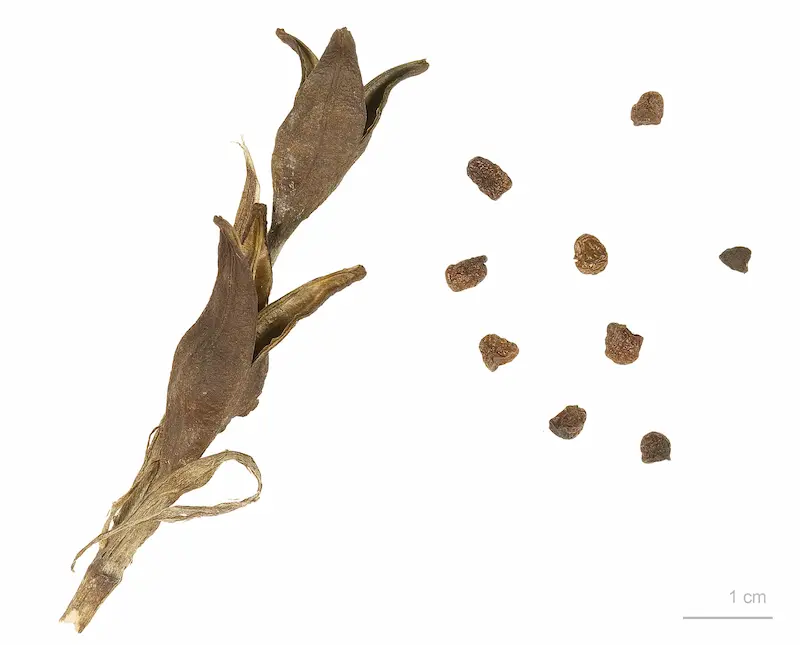Your cart is currently empty!
Purple Giant Hyssop is Great for Pollinators
Purple Giant Hyssop sets soft plumes of the palest purple flowers that top out at 6 feet, soaring above most other plants in the garden.
Your cart is currently empty!
Photo:
NatureFriend vis Pixabay
Iris versicolor, commonly called northern blue flag, is a clump-forming iris that is native to marshes, swamps, wet meadows, ditches, and shorelines from Manitoba to Nova Scotia. It became the floral emblem of Quebec only in 1999, after a tumultuous series of events. It has deep blue to purple flowers, the foliage is sword-like, and the flowers are complex and very showy. Iris flowers are known to symbolize power, with the three petals representing wisdom, faith, and courage. The petals smell like violets and have been used to make perfumes and potpourri.
The iris has a worldwide distribution, occurring throughout the Northern Hemisphere in temperate regions. It is native to Canada and is found in Manitoba, Ontario, New Brunswick, Quebec, Massachusetts and Nova Scotia. In the United States it is found in the south-eastern states from Maine to Florida. In Europe it occurs from Ireland to Scandinavia and Russia.
Botanical Name: Iris versicolor
Also Called: Wild Iris, harlequin blueflag, larger blue flag, northern blue flag
En français: Iris versicolore
Sun / Shade:
Watering:
Water: Keep wet
Height:
Pollinators:
The blooms contain nectar and pollen that attract hummingbirds, bumblebees, butterflies, moths and more. It also serves as shelter for animals that live along shorelines.
Blue flag iris’ natural habitat is ponds or water gardens with sunny places. They love water, so plant in wet areas. They can also be submerged under water for a while and still survive. The Blue Flag Iris is a charming addition to any garden’s wet areas. It is a perennial with violet-blue blooms that bloom in late spring and early summer. The violet sepals are down-curved and veined with yellow and white, and the blooms are 2.5 to 4 inches broad.
Companion plant suggestions include Asclepias incarnata and Carex muskingumensis.
Blue flag iris prefer moist to wet soil conditions. Place it in a wet spot, a well-mulched garden, or in the shallows of a pond to keep its roots moist. Water periodically and mulch upon planting if they are not planted in a swampy or damp location. They can withstand drought.
Blooms usually last 2-3 days, so it is recommended you dead head the wilted blooms to ensure new growth.
You can remove dead flower stalks with scissors as well as any dead flower heads, just to keep the plant looking nice. Make sure to only prune when the foliage is becoming yellow. The leaves help store energy for the plant’s rhizomes and so they should not be cut early.
After fall frost, plant leaves may be trimmed back to about 1” above the crown.
In nature, Blue flag iris forms colonies via self-seeding and creeping rhizomes. They should be propagated through division after 2-3 years of growth to keep them under control. Propagate via division after they have finished blooming. When propagating, use gloves; be cautious since the rhizomes are very toxic and can cause skin irritation.
When propagating by seeds, compress them into the soil, but do not bury them.

Their roots are dangerously poisonous to both humans and livestock. Rhizomes (thickened roots) and rootstocks, fresh or dry. Minor skin irritation when touched, low toxicity if ingested. Symptoms include nausea, vomiting, abdominal pain, diarrhea, elevated temperature following ingestion; skin irritation upon contact with seeds, rootstock, or cell sap
Irises have been used medicinally in the past, despite its highly poisonous rootstocks. Some tribes used the fibres of the leaves to spin strong, fine twine.
Prone to damage from rabbit, vole and other small mammals. Slugs and snails frequent the Iris as well. Leaf-chewing caterpillars, sap-sucking aphids, whiteflies and spider mites are common iris pests. Holes in the leaves or chewed leaves are signs of caterpillars. You can get rid of aphids by mixing a little bit of dishsoap and water and spraying the leaves every 2-3 days for about 2 weeks.
Purple Giant Hyssop sets soft plumes of the palest purple flowers that top out at 6 feet, soaring above most other plants in the garden.
Blue cohosh flowers and roots are used for medicinal benefits. Be careful, it’s not a safe plant. Come learn about Blue Cohosh care.
My partial shade planter is starting to grow. I put a cage in the center and then planted peas; they will climb up the cage.
Discover the native Rough-Stemmed Goldenrod: a clump-forming plant with serrated leaves and bright yellow blooms. Attract pollinators to your garden by adding native species – an excellent addition to any garden in late summer and early fall. Plus, debunked studies have confirmed that it isn't the cause of hay fever!
All the tomatoes that I am growing, Yellow Pear, Pink Ponderosa, Polish Raspberry, Black Krim, Red Currant, are heirloom and indeterminate.
Learn how to create a natural white oil insecticide at home with this simple DIY recipe for effective organic pest control.
GardeningCalendar.ca gets some funding from advertisers. If you click on links and advertisements at no cost to you, the site may receive a small commission that helps fund its operation.
© 2025 J&S Calendars Ltd.
Leave a Reply
You must be logged in to post a comment.